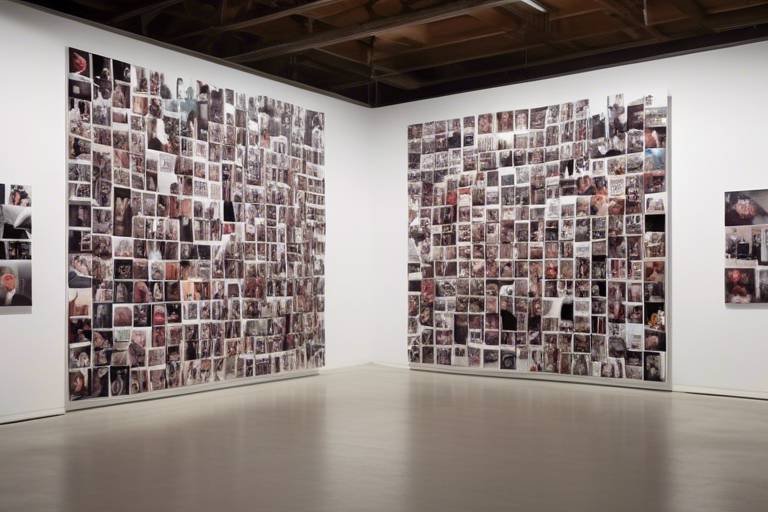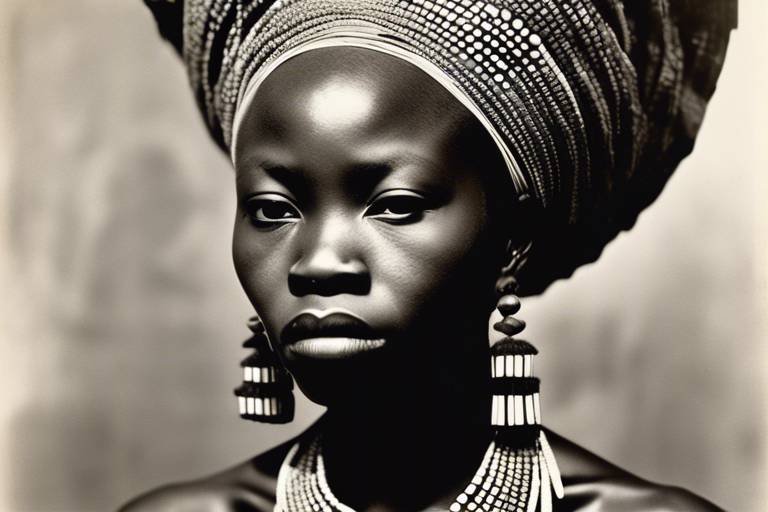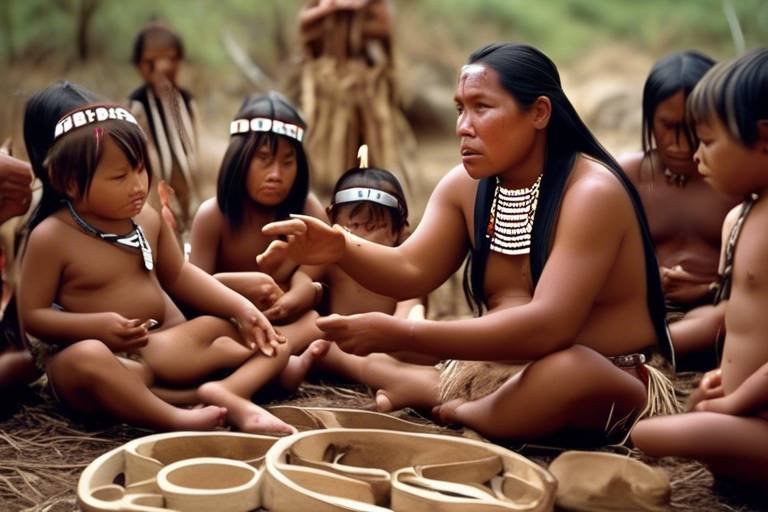The Role of Art in Expressing Human Rights
Art has always been a powerful medium for expressing and advocating for human rights. It serves as a universal language that transcends cultural barriers, speaking to the core of our humanity. Through various artistic forms, artists have been able to shed light on human rights violations, spark conversations, and inspire positive change in society.
When we think of art as a form of protest, we envision bold paintings, striking sculptures, and captivating performances that challenge the status quo and demand justice. Artists throughout history have used their creative talents to amplify the voices of the oppressed, shining a spotlight on injustices that might otherwise go unnoticed.
Artistic activism takes this concept a step further by using creative expression as a tool for social change. By harnessing the emotive power of art, activists can raise awareness about human rights abuses, challenge oppressive systems, and empower marginalized communities to reclaim their voices and agency.
Visual arts, including photography and graphic design, have a unique ability to capture the essence of human rights issues in a single frame. Through compelling imagery, artists can evoke empathy, provoke thought, and inspire action among viewers, bridging the gap between distant realities and personal connections.
Performance art, with its immersive and interactive nature, offers a dynamic platform for artists to engage directly with audiences. By staging thought-provoking performances that address human rights themes, artists can ignite dialogue, challenge perceptions, and mobilize individuals to stand up for justice and equality.
Art installations in public spaces have the power to transform ordinary environments into hubs of social commentary and reflection. By situating art in the public sphere, artists can engage with diverse audiences, spark conversations about human rights, and invite viewers to experience issues in a tangible and visceral way.
Street art, often born out of grassroots movements, uses public walls and spaces as canvases for social change. By bringing art to the streets, artists can reach communities directly, sharing messages of resistance, solidarity, and hope in the face of human rights violations and systemic injustices.
Documentary films and storytelling through film offer a powerful medium for documenting human rights abuses and sharing personal narratives. By showcasing real-life stories and experiences, filmmakers can shed light on pressing issues, inspire empathy, and mobilize viewers to take action in support of human rights advocacy.
Collaborative art projects that bring together artists, activists, and communities foster a sense of collective action and solidarity. By co-creating meaningful works that address human rights issues, these collaborations promote dialogue, understanding, and unity in the pursuit of positive social transformation.

Art as a Form of Protest
Art has long been used as a powerful tool to express and advocate for human rights. This article delves into various ways in which art serves as a medium for highlighting and promoting human rights issues.
Artistic expressions such as paintings, sculptures, and performances have been utilized to protest against human rights violations and injustices, drawing attention to societal issues and advocating for change. Artists use their creativity to spark conversations and challenge the status quo, pushing boundaries and provoking thought.
Through powerful imagery and symbolism, art can convey messages that words alone may struggle to articulate. It serves as a visual language that transcends barriers and speaks directly to the emotions and conscience of individuals. Art as a form of protest can be a bold statement against oppression and a call to action for justice.
Artists have historically played a significant role in shaping social movements and influencing public opinion through their work. By highlighting human rights abuses and shedding light on marginalized communities, art can serve as a catalyst for change and a voice for the voiceless.
From iconic protest posters to provocative street art, the realm of art as a form of protest is vast and diverse. Each piece carries a unique message and perspective, contributing to a collective narrative of resistance and resilience in the face of adversity.
Artistic activism is not confined to galleries or museums; it spills out into the streets, public spaces, and digital realms, reaching a global audience and igniting conversations on a massive scale. The power of art lies in its ability to transcend boundaries and connect people from different backgrounds through shared emotions and experiences.
Art as a form of protest is a testament to the enduring spirit of creativity and resilience in the face of injustice. It challenges us to confront uncomfortable truths, question established norms, and strive for a more just and equitable world.

Artistic Activism
Artistic activism is a powerful form of creative expression that goes beyond traditional methods of advocacy. It involves using art as a tool for social change, challenging norms, and amplifying voices that are often marginalized or silenced. Artists who engage in artistic activism harness the emotive and transformative power of art to spark conversations, provoke thought, and inspire action.
One of the key aspects of artistic activism is its ability to reach a wide audience and evoke emotional responses that traditional forms of activism may struggle to achieve. Through innovative and thought-provoking art forms, artists can shine a light on human rights abuses, systemic injustices, and issues that are often overlooked or ignored by mainstream media and society.
Artistic activism is not limited to a specific medium or technique; it encompasses a diverse range of artistic expressions, from visual arts and performance art to music, film, and literature. By blending creativity with activism, artists can engage with communities, challenge power structures, and advocate for positive social change in ways that are both impactful and inspiring.

Visual Arts and Advocacy
Visual arts have always been a powerful medium for advocacy and activism, transcending language barriers to communicate powerful messages about human rights. Through the lens of a camera or the stroke of a paintbrush, artists can capture the essence of social issues, evoking emotions and sparking conversations that lead to meaningful change. Photography, in particular, has the ability to freeze moments in time, immortalizing the struggles and triumphs of individuals fighting for their rights.
Graphic design, on the other hand, merges artistry with information, creating visually compelling images that convey complex human rights issues in a digestible format. From infographics to posters, graphic designers play a crucial role in distilling intricate concepts into impactful visuals that resonate with audiences on a deeper level. These visual representations not only educate but also inspire action and empathy, bridging the gap between communities and fostering a sense of solidarity.
Moreover, visual arts serve as a mirror reflecting the realities of our world, challenging viewers to confront uncomfortable truths and confront their own biases. By exposing the harsh realities of human rights violations through art, artists compel individuals to question existing power structures and advocate for a more just and equitable society. The power of visual arts lies in its ability to transcend words, speaking directly to the heart and soul of humanity, igniting a spark of empathy and understanding that fuels the fight for human rights.

Performance Art for Social Change
Performance art is a vibrant and impactful medium that transcends traditional boundaries, allowing artists to convey powerful messages and challenge societal norms through live presentations. By merging creativity with activism, performance art becomes a catalyst for social change, engaging audiences in thought-provoking experiences that spark conversations and inspire action.
Through dynamic and interactive performances, artists can address pressing human rights issues, provoke emotional responses, and prompt reflection on the complexities of social justice. Performance art creates a space for dialogue, inviting viewers to confront uncomfortable truths, question established beliefs, and envision a more equitable and inclusive world.
Whether through theatrical productions, dance performances, or multimedia installations, performance art has the unique ability to transcend language barriers and communicate universal themes of resilience, solidarity, and hope. Artists harness the power of storytelling and embodiment to amplify marginalized voices, challenge power structures, and advocate for systemic change.

Art Installations in Public Spaces
Art installations in public spaces have the remarkable ability to transform ordinary locations into vibrant hubs of creativity and contemplation. These installations, often large-scale and visually striking, serve as powerful statements that challenge conventional norms and provoke thought-provoking conversations about human rights.
Imagine walking down a bustling city street and encountering a massive sculpture symbolizing unity and diversity, or stumbling upon an interactive art piece that encourages viewers to reflect on issues of equality and justice. These installations not only beautify public spaces but also act as catalysts for social change, inviting passersby to engage with complex human rights themes in a tangible and immersive way.
One of the most compelling aspects of art installations in public spaces is their ability to spark dialogue and foster community engagement. By creating a shared experience for diverse audiences, these installations have the potential to bridge gaps in understanding and ignite conversations that transcend cultural, social, and political boundaries.
Moreover, art installations in public spaces often serve as poignant reminders of the pressing human rights challenges facing our world today. Whether addressing issues of discrimination, environmental degradation, or economic inequality, these installations have the power to amplify marginalized voices and shed light on the urgent need for social justice and equality.
Through the strategic placement of art in public spaces, artists and activists can effectively reach a wide audience and inspire individuals to reflect on their own values and beliefs. By merging artistic expression with public advocacy, these installations create a unique platform for promoting human rights awareness and inspiring collective action towards a more just and equitable society.

Street Art and Social Commentary
Street art is a powerful form of social commentary that transcends traditional artistic boundaries, utilizing public spaces as a canvas for expressing poignant messages about human rights, social justice, and resistance against oppression. Through vibrant murals, stenciled graffiti, and thought-provoking installations, street artists challenge societal norms, confront power structures, and amplify the voices of marginalized communities.

Documentary Films and Storytelling
Documentary films and storytelling through film provide a compelling platform for shedding light on human rights violations and advocating for social change. Through the lens of a camera, filmmakers capture the raw realities of injustice, discrimination, and oppression, bringing these issues to the forefront of public consciousness. These films serve as powerful tools for educating audiences, evoking empathy, and mobilizing individuals to take action in support of human rights causes.
One of the remarkable aspects of documentary films is their ability to give a voice to those who have been silenced or marginalized. By sharing personal narratives and testimonies, filmmakers humanize complex human rights issues, making them relatable and emotionally impactful for viewers. Through storytelling, these films create a bridge of understanding between different communities and cultures, fostering empathy and solidarity in the fight for justice.
Moreover, documentary films have the potential to spark dialogue and catalyze social movements. By presenting compelling evidence and exposing systemic injustices, these films challenge viewers to question the status quo and advocate for meaningful change. Through powerful storytelling techniques, filmmakers can inspire individuals to become agents of change, encouraging them to stand up against human rights violations and work towards a more just and equitable society.

Artistic Collaborations for Change
Artistic collaborations for change are powerful initiatives that bring together diverse voices and talents to address pressing human rights issues through creative expression. By uniting artists, activists, and communities, these collaborations foster a sense of solidarity and collective action towards positive social transformation.
Through collaborative art projects, individuals with different backgrounds and perspectives come together to co-create meaningful works that resonate with audiences on a deep emotional level. These projects often involve interdisciplinary approaches, combining visual arts, performance, storytelling, and multimedia elements to convey complex human rights narratives.
Collaborations in the realm of art for human rights serve as a catalyst for dialogue and reflection, encouraging participants and viewers to engage critically with social issues and envision a more just and equitable world. By pooling resources and expertise, artists can amplify their impact and reach a wider audience, sparking conversations that challenge existing power structures and norms.
Frequently Asked Questions
- What role does art play in advocating for human rights?
Art serves as a powerful tool to express and advocate for human rights by highlighting issues, promoting awareness, and inspiring change. It can be used as a form of protest, artistic activism, and visual storytelling to amplify human rights messages.
- How does performance art contribute to social change?
Performance art provides a dynamic platform for artists to engage with audiences, spark critical dialogue on human rights issues, and inspire collective action towards justice and equality. It encourages viewers to reflect on societal issues and take proactive steps for positive transformation.
- What is the significance of art installations in public spaces?
Art installations in public spaces create interactive and immersive experiences that challenge public perceptions, spark conversations about human rights, and transform urban environments into sites of reflection and engagement. They serve as a medium for promoting dialogue and raising awareness on social justice issues.
- How do collaborative art projects contribute to addressing human rights issues?
Collaborative art projects bring together diverse voices to co-create meaningful works that address human rights issues, foster solidarity, and promote dialogue for positive social transformation. By uniting artists, activists, and communities, these projects showcase the power of collective action in advocating for human rights.



















